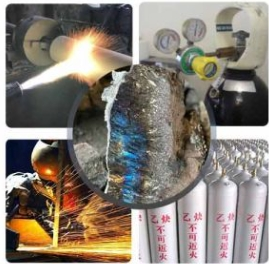
Calcium carbide plays a crucial role in various industrial applications. However, its use comes with potential risks that need to be carefully managed. This article aims to provide a detailed guide on the safety aspects of calcium carbide use, with a focus on training operators from both theoretical and practical perspectives.
Calcium carbide is a chemical compound with unique chemical properties. In industrial applications, it is widely used in the production of acetylene gas, which is essential for welding and cutting processes. Understanding its chemical characteristics is fundamental for safe and efficient use.
One of the most significant risks associated with calcium carbide is its reaction with water. When calcium carbide comes into contact with water, it produces acetylene gas, which is highly flammable and can cause explosions. According to industry data, over 60% of calcium carbide - related accidents are due to improper handling of water contact. Additionally, the presence of calcium phosphide impurities in calcium carbide can lead to the production of phosphine, a toxic gas that poses a serious threat to human health.

Let's take a real - world accident as an example. In a chemical plant in [location], a leakage of calcium carbide occurred due to improper storage. When it rained, the calcium carbide reacted with water, resulting in a large amount of acetylene gas being released. The subsequent explosion caused significant property damage and several injuries. This case clearly shows the real - world consequences of calcium carbide's reaction with water.
To ensure the safe use of calcium carbide, several key measures should be taken. First, conducting a thorough analysis of the calcium carbide's composition is essential. This helps to identify the content of impurities such as calcium phosphide. Second, strict waterproof and leakage - prevention measures should be implemented. For example, calcium carbide should be stored in dry and sealed containers. Third, an emergency response plan should be established to handle potential accidents promptly.
| Safety Measure | Description |
|---|---|
| Composition Analysis | Regularly analyze the calcium carbide's composition to detect impurities. |
| Waterproof and Leakage - Prevention | Store in dry and sealed containers, and ensure proper storage conditions. |
| Emergency Response Plan | Establish a plan to handle accidents such as gas leakage and explosions. |
Operator training is a critical part of calcium carbide safety management. Operators should be trained on the properties of calcium carbide, operating procedures, and safety regulations. Through theoretical courses and practical training, operators can better understand the risks and how to avoid them. A well - trained operator can reduce the accident rate by up to 80%.
Inner Mongolia Longwei Chemical Technology Co., Ltd. offers high - quality calcium carbide products. Their products feature high purity and strict quality control. With a lower content of impurities such as calcium phosphide, the risk of producing toxic gases is significantly reduced. Using their products can enhance the safety of industrial operations and improve production efficiency.
We encourage you to share your questions about calcium carbide safety operations. Leave your questions in the comments section below, and our experts will answer them promptly.
Are you looking to enhance the safety of your calcium carbide operations? Inner Mongolia Longwei Chemical Technology Co., Ltd.'s high - quality products can be your ideal choice. Click here to learn more about our products and start a safer and more efficient production journey!
.png)
.png)
